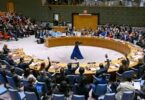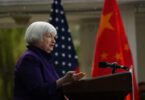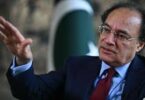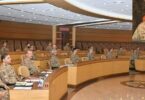The dream of making Gawdar free trade zone came true. Prime Minister Shahid Khaqan Abbasi inaugurated first Gawader International Expo on Monday. The Expo was attended by entrepreneurs and 5000 thousand business representatives from all over the world. About 200 companies from both China and Pakistan also participated in this event. Addressing the two days Expo, the Prime Minister announced an equalization package for the speedy socio-economic uplift of Baluchistan under which the federal government will provide 50 percent funds for the development of every district in the province.
Every mega development project brings backwash and spread effects and up to certain extent the reservations of the people of Baluchistan were genuine that Gawadar free trade zone will attract investment and human resource from the comparatively developed areas of the country which may create demographic imbalance at the expense of local people besides shrinking employment opportunities for them . The equalization financial package will ensure balanced economic development in Baluchistan provided the development funds are honestly utilized. The massive development package that was given by the previous PPP government could not bring any improvement in the lives to the people of Baluchistan because bulk of the development funds was misappropriated. The major factor of recent no confidence motion against PML-N Chief Minister Nawab Sana Ullah Zwhri and his resignation before the tabling of the motion was the lopsided and skewed priorities of his government. The development funds were not evenly released for all the areas of the province compelling the lawmakers of his own party to revolt against him.
China intends to employ 38000 Pakistani workforce in the Gawadar Trade Zone for which a training program in going on in the CPEC Technical and Vocational Training Center there. Preference should be given to the locals for imparting them training and providing employment. Human resource development must be an essential component of development priorities that will be fixed for the equalization package. Social sector development of Baluchistan has been neglected in the past and it needs special attention of both the federal and provincial government to allay the sense of deprivation lurking in the minds of the people of the province.
It is not yet clear as to whether Singpur model will be followed in the Gawadar free economic zone or Chinese Yuan will be the dominant currency for trade and investment because both China and Pakistan has agreed that Yuan will be the legal tender for this purpose. An agreement of currency swap does exist between China and Pakistan but Pakistan exporters and importer prefer bilateral trade with China in US dollars instead of opting for Yuan. In the backdrop of World Economic Forum there are bold inductions that the United States will devalue dollar 14-16 percent against the major currencies. The currency war between China and the United States will make US dollar more preferable for Pakistani trader to use it for foreign trade. The depreciation of Rupee against dollar, Euro and British Pound sterling has resulted in a steady surge in exports as it slightly improved its competitiveness in world market.
Senior Vice President Federation of Pakistan Chamber of Commerce and Industry (FPCCI) Syed Mazhar Ali, while hailing the opening of Gwader Free Zone, stressed the need for taking measures for transfer of technology instead of importing Chinese goods. He said the technology transfer would help in industrial development and create job opportunities for the skilled and semi skilled labor force of the country. He emphasized the need for improving the industrial base of the country and for focusing on value addition instead of exporting raw material and depending on imports to fulfill the domestic requirement. Likewise, Islamabad Chambers of Commerce and Industry has called upon the government to focus on promoting exports in order to attain self sufficiency and reduce dependence on domestic and foreign loans as the cost of debt servicing is rising and eating sufficient amount of tax revenue. The debt servicing devoured 30.4 percent of tax revenue. The sky-high tariff of energy inputs and regressive tax structure has taken a heavy toll on country’s exports. The value of exports was $ 25 billion in 2013-14 which dropped to $ 21 billion in 2016-17. Substantial reduction in the tariff of energy inputs, value addition and diversification of exports market will increase both the value and quantum of exports. Currently 44 percent of Pakistan exports are going to the markets of China, the United states,, Briton, Germany and Afghanistan. Search of new markets is inevitable by facilitating the visits of exporters to a large number of countries.






